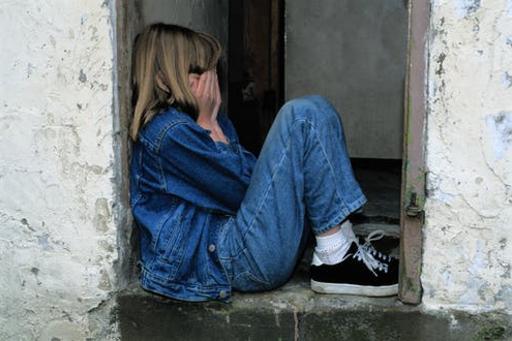
Let’s not leap to conclusions
GNC's Professor Helen Minnis' latest blog.
[Posted on 5th October 2021, by Helen Minnis]

A few years ago, at a wedding reception, I got into a fascinating conversation with an elderly man that finished with “sorry, I didn’t catch your name”. He was Julian Tudor-Hart, the legendary General Practitioner who, in 1971, submitted a paper to The Lancet from the Welsh mining village in which he practiced. It described the Inverse Care Law, which states that: “The availability of good medical care tends to vary inversely with the need for it in the population served”(1).
Yet, as the family lived in a materially deprived part of the city and the boy had once witnessed a non-fatal stabbing, the team had decided his problems were “trauma-based”, despite there being no trauma symptoms. This resulted in four years of untreated ADHD, damaging stress for the family, and school breakdown.
Research has demonstrated just how true this is: people living in the leafier suburbs tend to have family doctors with smaller list sizes, while in poorer areas lists are longer and patients have more complex problems(2). Better service provision in wealthier areas might be explained by a simple phenomenon: more clinicians wanting to work in areas with nice coffee shops, safe places to park a car, and where the patients have simpler problems. There is no doubt that life is tougher as a clinician in areas where patients’ problems can seem overwhelming.
But I think there is a more subtle reason for the Inverse Care Law – the way we sometimes stigmatise our patients (3). Last year, I was asked my opinion as to whether an 11-year-old boy might have attention deficit hyperactivity disorder (ADHD). A few years earlier, at age 7, a letter from his teacher had prompted a thorough neurodevelopmental assessment. A questionnaire for ADHD, completed by his parents, suggested he had symptoms so severe that only 1 in 100 children would be as hyperactive, impulsive and distractable. His teacher described him as rarely on task or in his seat. Yet, as the family lived in a materially deprived part of the city and the boy had once witnessed a non-fatal stabbing, the team had decided his problems were “trauma-based”, despite there being no trauma symptoms. This resulted in four years of untreated ADHD, damaging stress for the family, and school breakdown.
Let’s imagine two contrasting clinical consultations:
Mrs. Khaled consults you about her nine-year-old daughter Rana. They had been granted asylum in Sweden, two years previously, after a stressful time in a war-torn region of Syria. Their time in Sweden has not been easy either– they have been living in poor housing, their neighbours drink a lot and frequently become violent. Rana has not settled well into her class at school this year. She is withdrawn and doesn’t have any friends. It is difficult for Mr and Mrs. Khaled to get her to do her homework because Rana only wants to watch Disney videos and has massive temper tantrums if her parents insist.

When you meet Rana, she seems withdrawn and gives you little eye contact (but in some cultures, eye contact with adult strangers is discouraged). Hmmm…could this be linked to the trauma Rana will inevitably have experienced during the war in Syria and during her journey to Sweden? She is living in a tough domestic situation, so that could be causing her anxiety…and how are her parents managing those tantrums?
You have also been consulted by Mrs. Nilsson about her nine-year-old daughter Eva. Mrs. Nilsson works part-time which allows her to pick Eva up from school every day but, despite having a large garden in a friendly neighbourhood, Eva doesn’t seem to want to go out and play after school. She only wants to play indoors with her dolls-house and often becomes extremely upset if anyone interrupts her. She doesn’t have any friends.

When you meet Eva, she sits quietly playing with some miniature doll characters. She gives you little eye contact and that, coupled with the rather rigid way she is playing with her dolls, makes you wonder about Autism.
It turns out that both Rana and Eva have Autism. Which girl do you think will get that diagnosis first? Probably Eva. Children who have experienced adversity, like Rana, tend to get a diagnosis later…perhaps because their problems are at first considered to be “social”(4). In fact, Rana was well protected by her loving parents before and during the journey to Sweden. She has no trauma symptoms. The Khaleds are a well-functioning family and are strongly motivated towards their children’s success in their new country. Did you, like me, leap to the “possible trauma” conclusion?
This kind of instantaneous thinking is the natural phenomenon we call stereotyping - thought to be a safety mechanism that helps us process information quickly. We tend to negatively stereotype those from different social groups from our own - again, probably a safety phenomenon from a time in history when someone from the “out group” might have been dangerous to us. Who we stereotype, in modern times, is informed by the way history was taught to us in school, by google images and Hollywood movies. But this has real consequences for our patients. When we negatively stereotype someone, we judge them as being less competent and regard them with less warmth. This means that, unless we ourselves are Syrian refugees, we are more likely to suspect Mr and Mrs Khaled of being incompetent parents than we would a parent that appears to be more like ourselves(3).
What is the effect on families like the Khaleds? Does the repeated experience of not quite being listened to, of not being believed, of being suspected of having caused the problem, mean that people living in poverty or from ethnic minorities are less likely to seek services in the first place? In areas where people have routinely been stigmatised by health and welfare practitioners, perhaps some lose hope of good care and don’t even try to get a service.
A GP colleague of mine, Helen Richards, demonstrated this in a study she conducted in two contrasting areas of Glasgow – one wealthy, one deprived. She examined routinely collected information about referrals from general practice to hospitals for chest pain, then interviewed local people to dig deeply into what was really happening. She found that women with chest pain, in the deprived area, tended to keep quiet about it for fear of their GP criticising them for unhealthy lifestyle practices. In the wealthy area they tended to act immediately(5).
A psychiatrist colleague was amazed at the high number of weekly referrals to the child and adolescent mental health clinic she worked in, which was in a wealthy part of town. She wanted my advice about whether to approach our Clinical Director for increased staffing. Then we both remembered the Inverse Care Law and realised that that would be exactly the opposite of what the Clinical Director should do – that, in fact, she should target resources on the poorer parts of the city and perhaps institute a screening program to find the hidden cases there.
How do we overcome our natural tendencies to use stereotyping and ensure all families can access our services when they need them? I have always interpreted Chris Gillberg’s ESSENCE approach to mean that if any parent or professional has serious concerns about their child’s development, then they are probably right to be concerned. We need to take the concerns of parents and professionals seriously and offer assessment as soon as possible – ensuring that we cover all key areas, even if we have strong prior hunches about what might be going on. If we think the problem might be trauma, we should check for PTSD - and check for ADHD and Autism in case we are wrong. We need to find ways to ensure that those families who have had negative prior experiences of services get help when they need it. Universal screening for ESSENCE problems should help – as long as we don’t forget that we need to put more effort into reaching some families than others. If this extra effort isn’t put in, then we will miss the very families who need us most. We discovered this when doing a study in a materially deprived part of Glasgow. If we didn’t catch a family at home for the assessment they had invited us to carry out, we would always leave a message saying “call us if you don’t want us to try again”. In some cases, we had to visit the family many times - 12 times in the most extreme example - before managing to do the assessment. When we were finally successful, every single family was delighted to see us(6).
We are all talking about needing more resources for child and adolescent mental health services. Let’s make sure those resources reach the families who most need them.
Fictional names are used throughout this blog entry
[This is a blog. The purpose of the blog is to provide information and raise awareness concerning important issues. All views and opinions expressed are those of the writer and not necessarily shared by the GNC.]